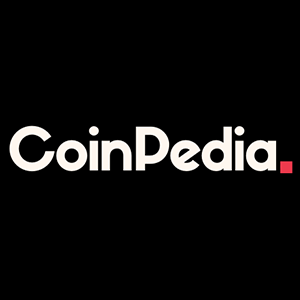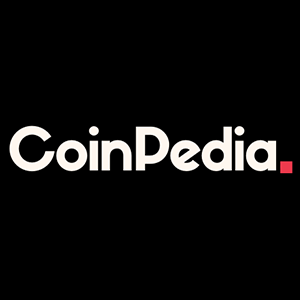Decentralized Money Markets Tame Risk and Stay Liquid
5 min read
The ability to put idle capital to work is among the most fundamental mechanisms of a healthy economy. People can borrow money to cover expenses, nurture enterprises, and enable other market participants to lend assets, earn yield, and grow their savings. Money markets were created to meet these needs. They have connected borrowers and lenders for centuries, generating substantial economic activity. Money markets may have transformed over time, but their basic design and purpose remain largely the same. Borrowers use them to take out loans, typically short-term, and to borrow one asset while putting up another as collateral, which is required if the borrower fails to pay back the debt. In this case, the collateral is sold to compensate the lender. Normally, the borrower pays off the loan, and the collateral is returned. What the rise of DeFi means for money markets Decentralized money markets allow users to lend and borrow cryptocurrencies and tokenized assets on-chain, and they need nothing but an internet connection. Billions of funds flow through blockchain-based money markets today. Alongside the growth of DeFi in general, these markets have been a rapidly growing use case of smart contracts, with all the latter’s pluses and minuses. Decentralized money markets are non-custodial, which means only the original user can withdraw the funds deposited. Centralized markets have an institution that decides how and where to use the funds, but their decentralized counterparts follow the predefined logic of blockchain-based smart contracts, assuring that no entity can utilize the funds improperly and that users control all aspects of the withdrawal process. Blockchain-based money markets use smart contracts to operate permissionlessly. Anyone with internet access can borrow working capital, earn yield, or both with very little friction. This resistance to censorship opens the market to many users, including the underbanked, generating higher yields and more economic activity. Unlocking dormant capital through smarter lending and borrowing Dolomite , a decentralized money market protocol, was founded in November 2022. The spectacular collapse of FTX, which we aren’t likely to forget soon, occurred at the same time. This is no coincidence. The protocol was created to maximize capital efficiency by enabling seamless, multifaceted asset use and ensuring asset safety and liquidity at the same time. Dolomite is about to launch its Token Generation Event (TGE) with the debut of DOLO, its native token. The token has been a long time in coming and the market is bursting with anticipation. It will be listed on major centralized exchanges like Kraken, Bitget, and KuCoin, with ByBit as the main launch partner. The protocol enables users to unlock dormant capital through smarter lending and borrowing and deploy assets efficiently via multiple DeFi integrations. Lenders can benefit from yield, governance rights, and staking rewards. It’s possible to open several borrowing positions from the same wallet with different risk profiles, with each position collateralized by over two dozen assets. Loans are kept safe in isolated positions, so if a liquidation affects one position, the others remain protected. The protocol is live on Arbitrum, Polygon zkEVM, Mantle, and X Layer, all of which are optimized for low gas fees and high throughput and preserve user security. A three-pronged approach to liquidity provisioning The ecosystem includes three tokens – DOLO, veDOLO, and oDOLO – a model that aligns incentives, contributes to DAO treasury appreciation, and drives sustainable growth. DOLO serves as the foundation for liquidity provisioning, governance, and incentives. veDOLO holders can vote on asset listings, protocol upgrades, and other strategic decisions. Stakers receive part of the protocol fees, including liquidation fees, interest spreads, and yield from protocol-owned liquidity. Holders can unlock tokens prematurely for a fee that declines over time, and a portion of that fee is used to repurchase oDOLO, which users earn by supplying liquidity to select assets. Users are subject to a 7-day pairing process to convert oDOLO into veDOLO, which involves matching oDOLO with DOLO bought on the open market in a 1:1 ratio. Users acquire veDOLO at a discount based on the chosen lockup duration after the matching period. The discount ranges from 5% to 50% depending on that period, which goes up to two years. The decentralized money market thus creates a self-perpetuating value loop, where protocol-owned liquidity increases long-term, and liquidity providers benefit from sustainable participation. Tokenomics drives governance engagement and healthy liquidity by ensuring incentive alignment across stakeholders. Dolomite has executed an airdrop successfully and emerged as a leading lender on Berachain, the 7th largest blockchain, and is also the 8th biggest DeFi lending protocol with over $1 billion in Total Value Locked (TVL). It has achieved a trading volume of $926.74 million and supports advanced borrowing strategies with over 1,000 assets to choose from. Low-risk margin trading is no longer an oxymoron Margin trading on decentralized exchanges has historically been limited to trading ETH and WBTC against stablecoins. However, Dolomite makes it possible to margin trade a myriad of DeFi assets against other DeFi assets or stablecoins. The protocol supports assets that can’t be found on any other DeFi platform. Smart contract risks are a fact of life, and bugs or exploits in lending or trading protocols can wipe out funds. Zeppelin Solutions, SECBIT Labs, Bramah Systems, and Cyfrin have audited Dolomite’s core smart contracts over the course of their development, while Guardian and Zokyo have audited its modules. All production smart contracts have 100% branch test, line, and statement coverage. Most DeFi protocols rely on price feeds from oracles. If an oracle is manipulated or fails, incorrect prices can lead to wrongful liquidations. DOLO uses Chainlink’s CCIP technology, which indirectly helps protect against this risk by improving the cross-chain security and reliability of oracle-based price feeds. If you’re borrowing or collateralizing with a stablecoin, the loss of peg can distort your margin and increase liquidation risk. Dolomite supports stablecoins like USDT and USDC, which face a low risk of de-pegging. Its new Smart Debt feature allows traders to use others’ collateral or debt. For example, users supplying USDT can swap it for USDC, so their collateral serves as a liquidity pool for stablecoin traders. The platform’s three-token ecosystem further addresses slippage and liquidity risk. Disclaimer: This article is provided for informational purposes only. It is not offered or intended to be used as legal, tax, investment, financial, or other advice

Source: Crypto Daily



